An Against Medical Advice Form (also known as discharge against medical advice) is a standard medical document that a patient uses to terminate any medical relationship with a doctor or their health facility and get discharged against their advice.
As a medical practitioner, there will be periods when patients in your care decide to do away with whatever treatment or medical advice you might have because they want to leave your hospital or medical facility. Sometimes, such patients leave against medical advice because they don’t agree with the clinical judgment or diagnosis. Other times, it is due to a conflict between the healthcare provider and the patient. Also, the economic status of some patients can make them opt out of medical care against the advice of the doctor.
Sometimes, you may try to persuade such patients further, but they have their minds made up, and there is absolutely nothing you can do. Whatever the reason may be, it is imperative that there is proper documentation so you can avoid any form of liability that may come with their decision.
Since patients who leave against medical advice are a risk to themselves, and their leaving can be a potential medical-legal risk, an against medical advice (AMA) form is signed by patients to reject medical treatments or recommendations from their doctors. Once signed, the patient releases the healthcare provider from any liability that may arise from them leaving against medical advice.
While it is the patient’s decision to discharge themselves from the hospital without any medical backing, it is important that physicians see it as the patient’s right and educate them on the signs and symptoms that will indicate that they need further medical attention.
Similarly, as a physician, you should know that when a mentally stable or competent patient discharges themselves against medical advice, you are not absolved of any legal duty of care. While the patient may be judged to have been negligent and failing to act as expected, the court hardly puts all the responsibility on the patient alone. Hence, as the physician, you can be charged with contributory negligence. In a place like Québec, Canada, it is referred to as professional civil liability. So, you definitely want to build a good doctor-patient relationship and do things right if a patient insists on leaving.
Free Against Medical Advice Form Templates
A patient discharging themselves against medical advice can be really annoying for medical practitioners, but as a physician, it is important you understand that this practice is here to stay. You need to ensure you have the right information and documentation for such – and leaving against medical advice form is the proper way to collect that information. Download free and customized templates from below and use them to create your AMA form:
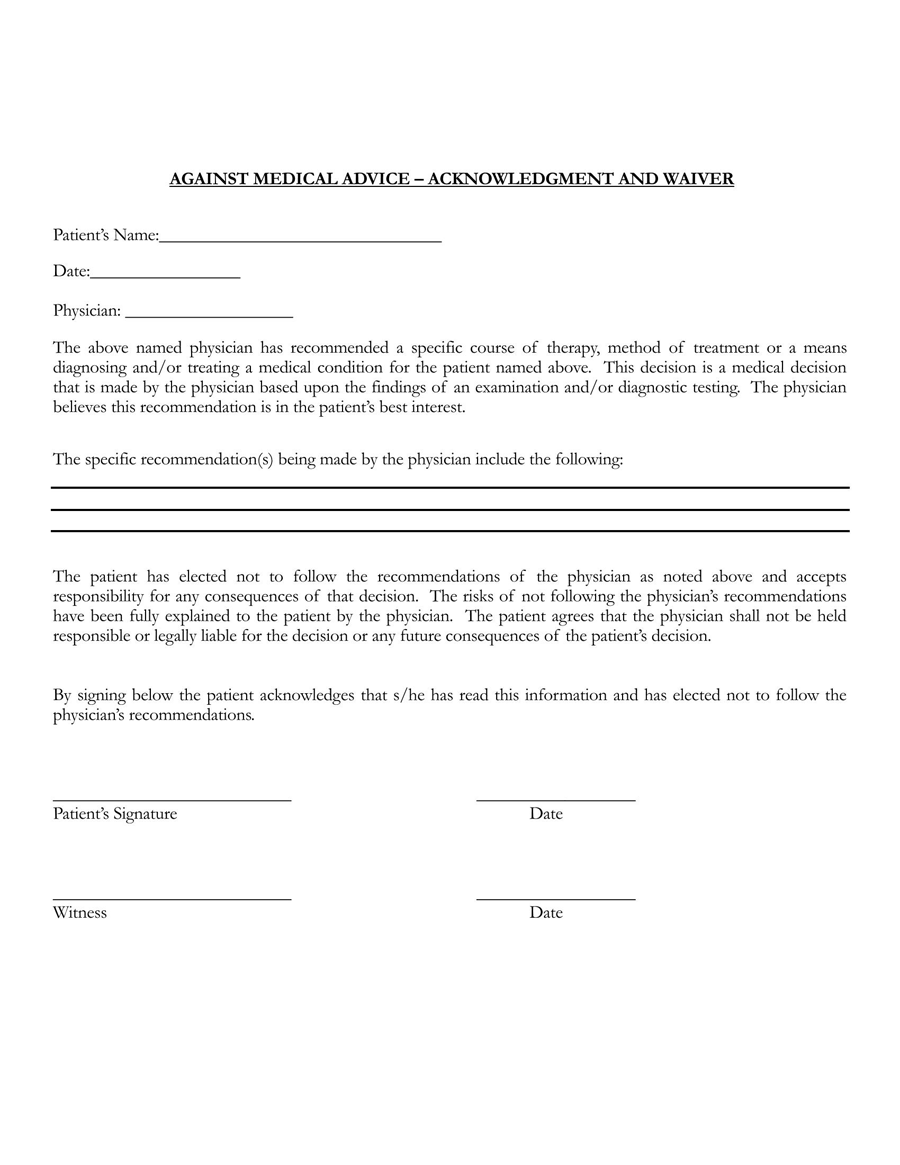
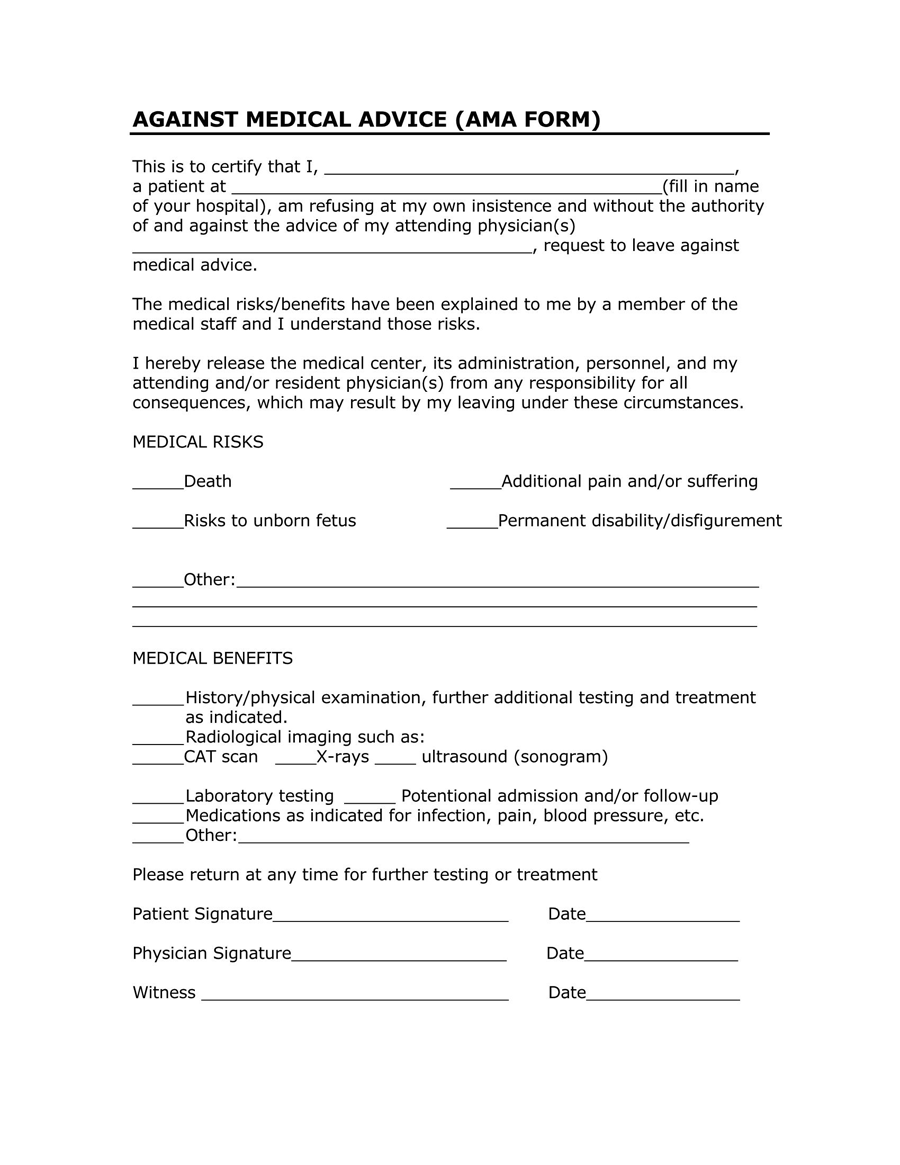
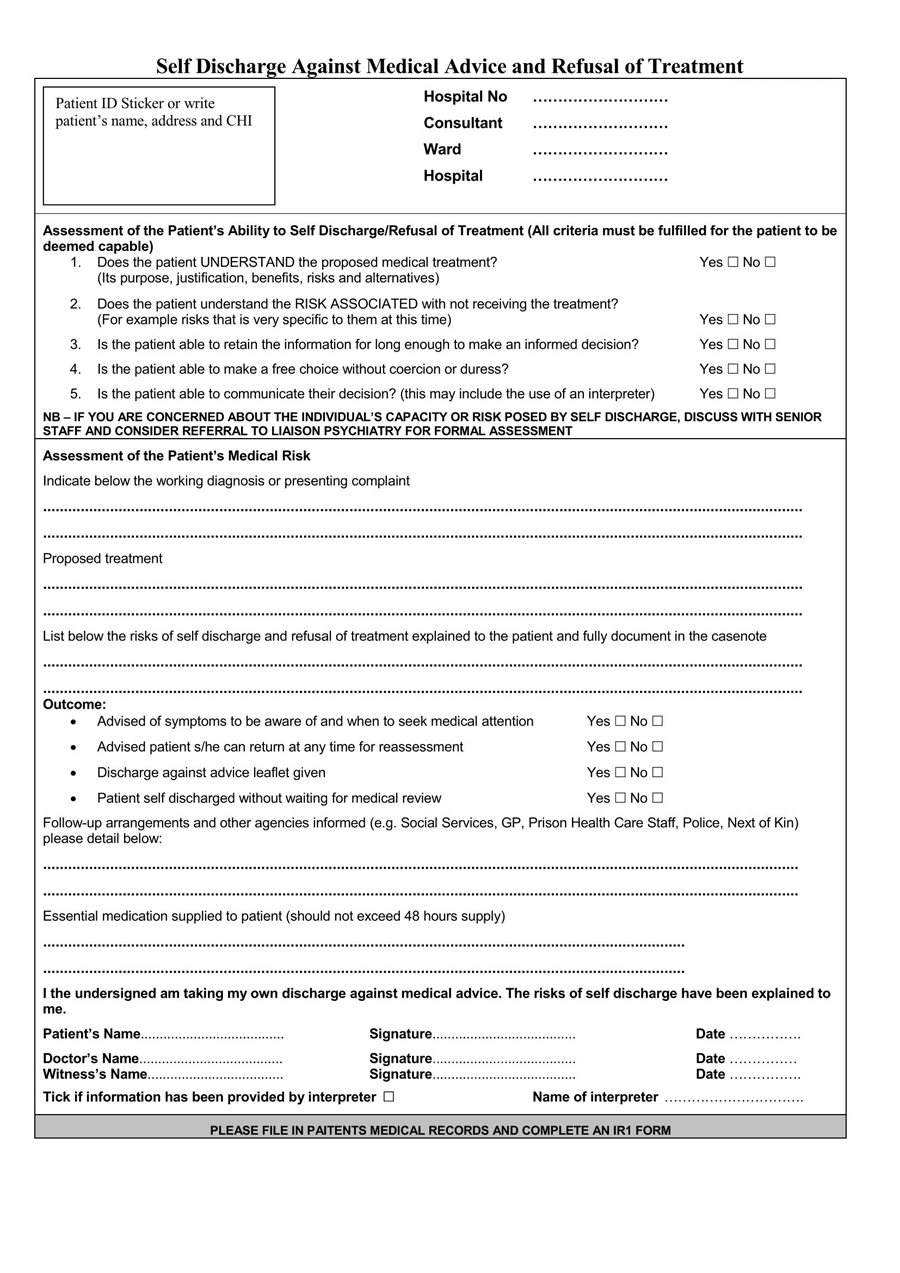
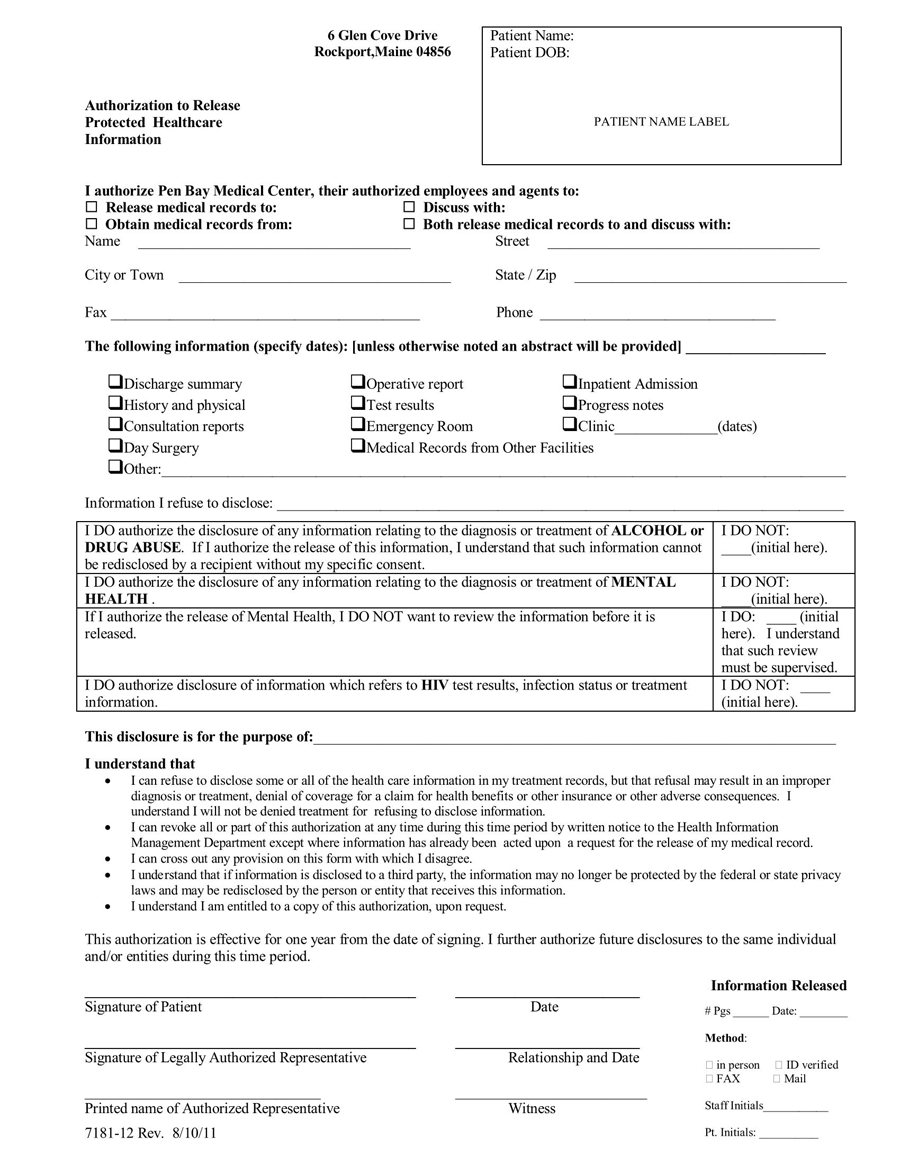
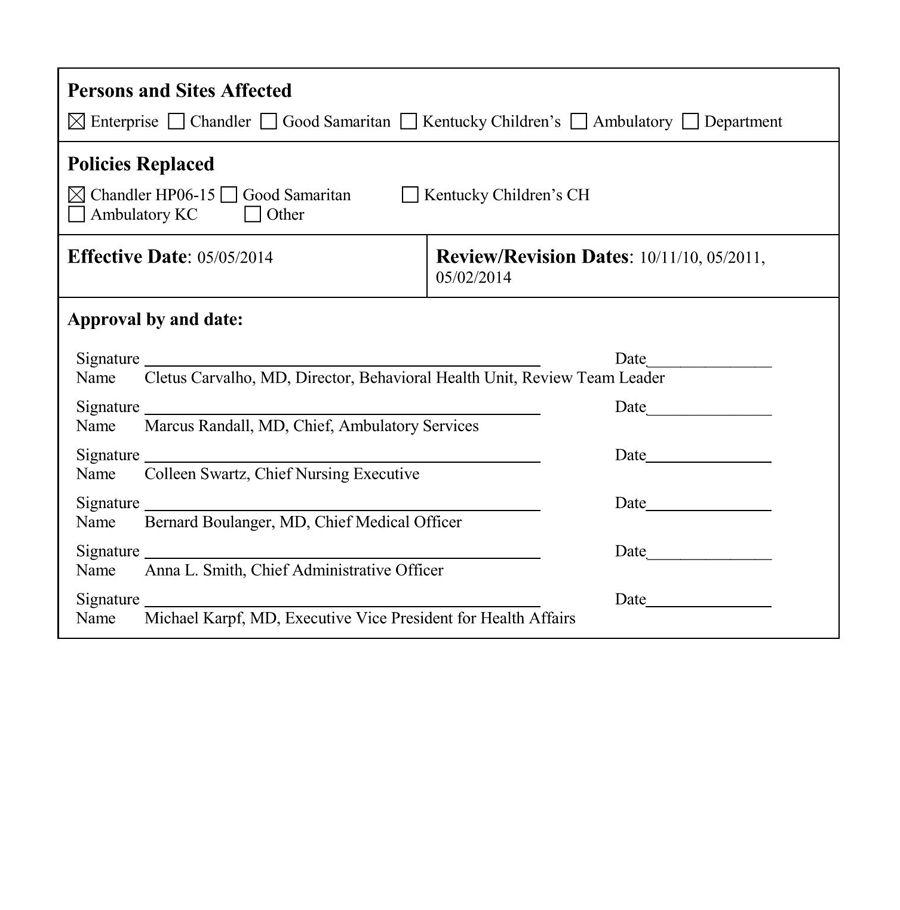
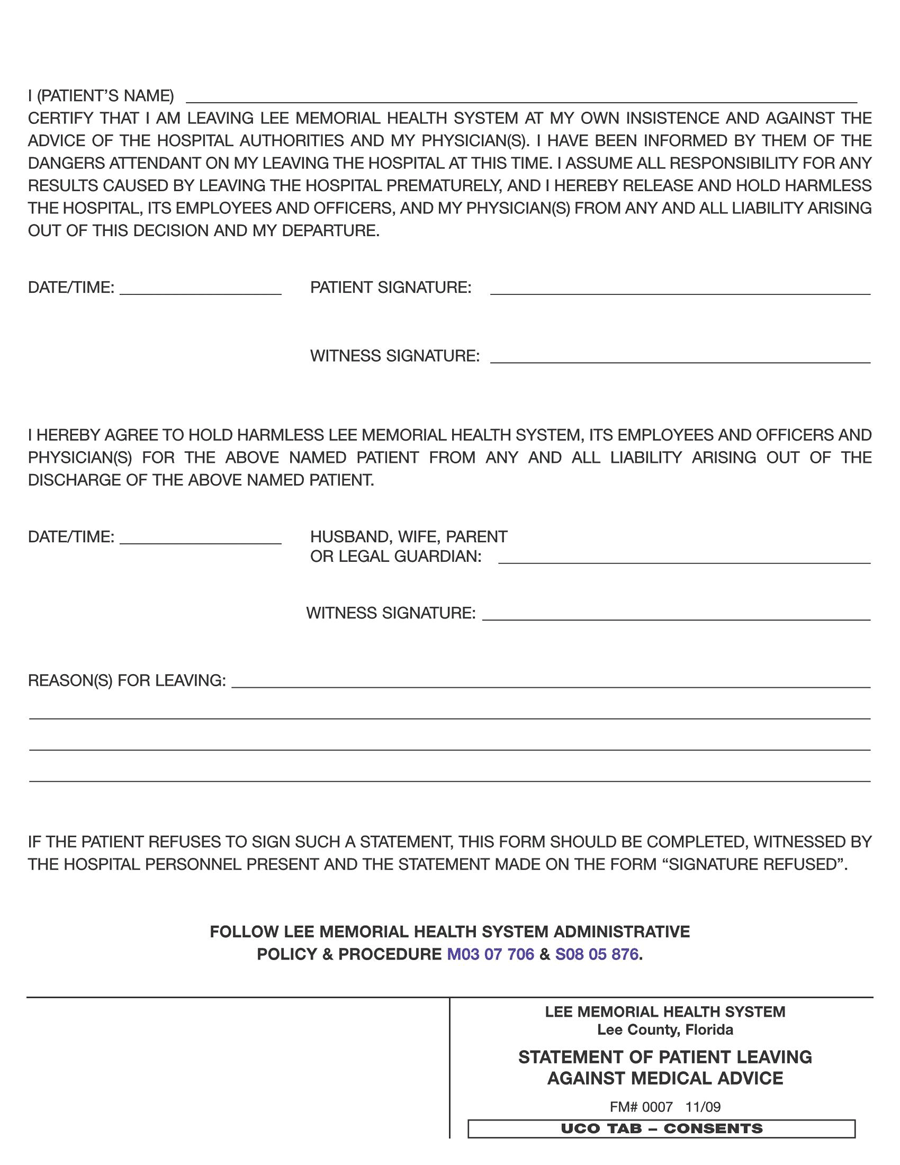
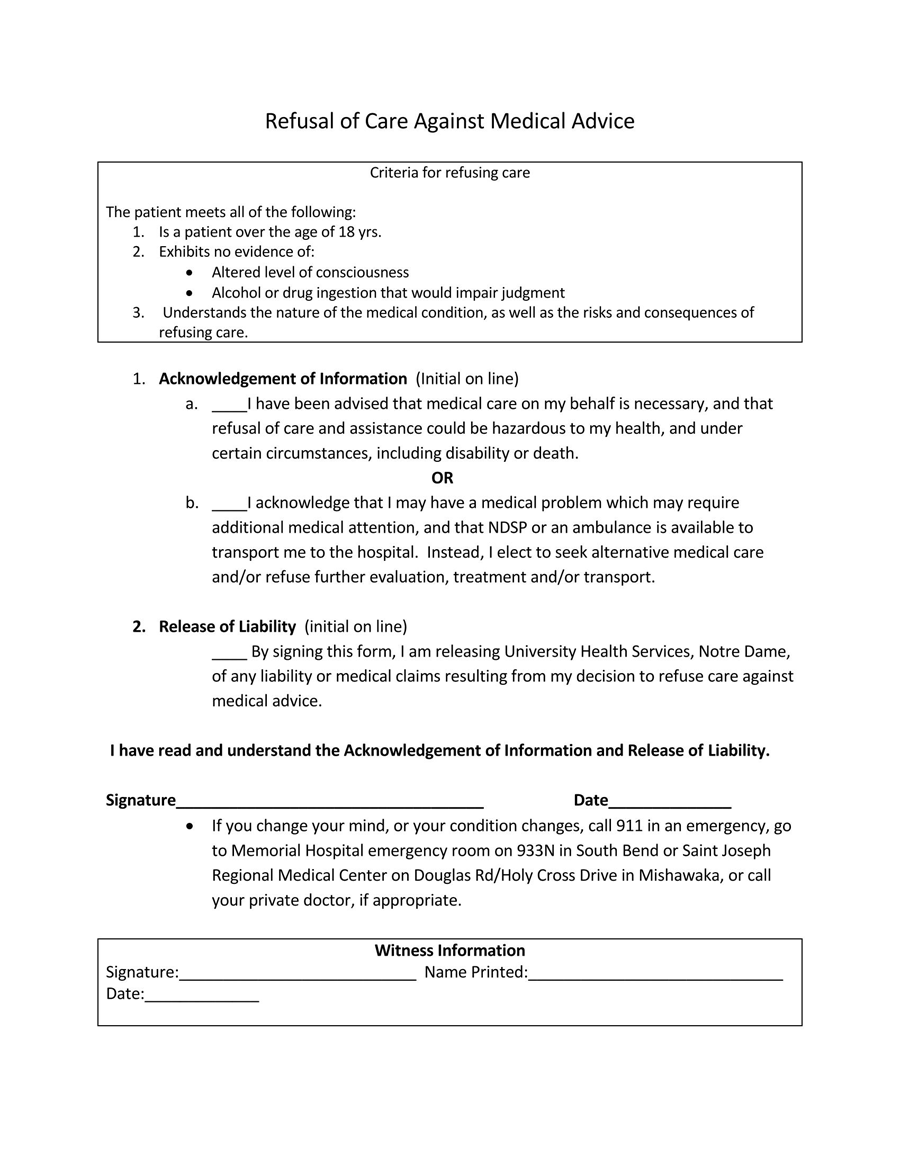
Key Elements of AMA Form
Against medical advice form is a very important document that clearly states your position in cases where patients decide to discharge themselves contrary to your medical position. This form will come in handy during legalities or any form of challenge in the future. Therefore, there are key information you must include in the AMA form to prevent any form of liability. They include:
Patient’s personal details
The form should include the patient’s full name, hospital number, and other relevant information. These information must tally with the patient’s records at your disposal. Therefore, you should verify that all the information provided are correct. You may also ask the patient to confirm the same before you move on to other information.
Recommendations for care
In simple terms, this is a summary of the patient’s medical diagnosis or conditions and your advice based on these medical issues. It is expected that during your conversation with such patient, you have informed them adequately your recommendations and how these recommendations will be of benefit to them and help them get better.
Mental capacity assessment
A patient has to be in a good mental state for a leave AMA to be approved. Therefore, their normal mental status and capacity should be clearly stated in the AMA form. Also, if mental checks or tests were carried out to arrive at this conclusion, you should include the associated information.
Patient’s reason for refusing investigation or treatment
Another essential information that must be included in a discharge against medical advice form is why the patient has decided to go against your medical advice. When a patient requests to leave your medical facility, the first thing you want to do is understand why. All of these reasons are to be included in the AMA form. You should also confirm with the patient that the reasons you have stated are accurate before proceeding to the next stage.
Possible risks involved
There are always medical risks involved when a patient decides to leave a hospital against medical advice. Ensure that the potential medical risks involved are explained to such a patient, and these are also stated in the leave AMA form. These may include a regression, chronic pain, or death.
Benefits of admission
As the risks of the process are highlighted, you also have to let a patient understand what benefits they stand to gain from staying back at the hospital and receiving medical care. These may include direct access to nurses, physicians, monitoring, and prompt treatment.
Follow-up instructions
Before the AMA form is signed, you should also inform the patient that they are allowed to return to your medical facility for care at any time. You may also tell them the symptoms they should use as indicators.
Discharge instructions
Finally, you include the specifics of the discharge and other related information. These include when they were admitted, when they want to be discharged and the accurate date and time they were officially discharged from your hospital.
Signatures
After all is said and done, let your patient go through the information on the against medical advice form and append their signature as a confirmation of the process. As the physician, you should also append your signature on the document as a confirmation that all information provided are accurate and you were part of the process. Having both signatures on the document is important because unless the signatures are appended, the document isn’t binding.
How to Stop Patients from Leaving AMA
Leaving AMA is a common problem in the medical world, and it is a usual practice all around the world. And as established earlier, patients request to leave against medical advice for so many reasons and whenever they want. According to a recent study, out of 150,000 discharged patients, about 2% of the patients left the hospital AMA. However, within the next 30 days, those who left AMA were twice as likely to be admitted. If they had been convinced better and well-informed about the risks of leaving, they might have stayed back to prevent further complications.
It is important to understand the patients and their reason(s) for wanting to discharge themselves against medical advice to successfully prevent a patient from leaving. Here are the steps to follow when you face such a dilemma.
Identify reasons for their leaving AMA
Once a patient requests to leave AMA, the first step is to find out why. Maybe if you knew why, you’d be able to address whatever issue it is and successfully stop them from going through with the process. Thereby reducing the risk of further complications and morbidity.
There are several reasons a patient can have when requesting to be discharged AMA. They include:
Billing concerns
It is no news that healthcare is expensive, and money is the major reason patients opt out of medical care against medical advice. After spending so much money themselves and/or putting their family members through numerous medical expenses, patients can get tired and frustrated to the point where their health becomes secondary. In a case like this, what you can do as a medical practitioner is to advise such patients and provide them with information about how the hospital can help them with their bills.
In many cases, hospitals allow patients to pay their medical bills in installments, and a patient’s bill can be reduced if they are uninsured. In other cases, if a patient has a proof of low income or extreme financial distress, the hospital can decide to further reduce their medical costs. Similarly, in some places, a patient may ask for forgiveness, and most hospitals can offer a repayment plan with little to no interest.
You can also let such patients know that when they leave against medical advice, they will most likely return because of the same illness or due to further complications. And when they do, the return visits will cost them more, especially if they are inadequately treated for medical conditions like endocarditis, pneumonia, or diabetic ketoacidosis.
If you are not well-informed about billing plans, you can direct the patient or their advocate to the necessary unit that will provide them with all the information they need.
Dissatisfaction with the care
Another common reason patients leave hospitals against medical advice is because they are dissatisfied with the kind of care they get. Patients are customers, and if they are not impressed with a particular medical care or if they believe the care does not meet their expectations, they can decide to leave whenever they wish.
Apart from receiving poor care, such patients may also disagree with the type of care recommended by the hospital and want to flee because they fear the hospital errors can endanger their health. Once you get such a complaint, you should report to the appropriate unit in the hospital so they can handle the situation accordingly. If you have a good relationship with the patient, you may also try to convince or pacify them.
Failure to reach an agreement
Patients can also request to be discharged against medical advice if they are unable to reach a consensus with their healthcare provider about the need for continued impatient care. Usually, this is as a result of poor communication between either parties or lack of trust. In other words, once a patient loses trust or fails to reach a consensus with their physician about their diagnosis, prognosis, and the most suitable kind of treatment, they are highly susceptible to leaving against medical advice.
Bad experiences in the past
Just like you may not visit a restaurant again after a terrible meal, some patients have had bad experiences with hospitals. They literally do not like hospitals, and due to this reason, they don’t want to be there. Some patients are afraid they might get an infection, so they’d rather stay in their homes than be in the hospital. For such patients, you can reassure them your hospital is different, and you have measures in place to prevent all kinds of infections. Some patients will reconsider while some will not. So, don’t get agitated if a patient insists on leaving AMA.
Poor communication
Inadequate communication or lack of understanding can also result in patients leaving against medical advice. When a patient isn’t well-informed or misunderstood, they can be dissatisfied with the quality of care being given or even the caregiver. So, as a caregiver or physician, you need to be patient and check for understanding while communicating with your patients. This will not only help keep the patient, but it can also prevent the patient or their relatives from taking legal actions against you and/or your employer.
Other reasons
Aside from the major reasons highlighted, patients can also request to leave AMA for reasons like the hospital’s distance from their location, a personal conviction that they feel better, preference for other hospitals, delays during medical visits, and other personal reasons.
Address your patients’ legitimate complaints
As an organization or physician, you must be able to handle serious reportable events (SREs) when they come – especially with cases where the patient requests to leave against medical advice. Due to the legalities and risks involved, hospitals need to take complaints very seriously by jumping into action and trying to resolve such issues quickly.
Note that until the patient’s problem is resolved, they will not be happy. Therefore, your primary goal should be resolving whatever problems there are, and proffering solutions.
Adapt control measures for patients leaving AMA
If there is a high record of patients leaving against medical advice at your hospital, your reputation can be greatly affected, as this may represent failure on your part. At the same time, you will be losing a lot of money if your patients keep leaving. So, it is important to take measures to reduce the number of patients who leave your hospital AMA.
The first thing to do is establish effective communication between you and your patients. You can also train other physicians on how to communicate effectively with patients in their care. You can also target patients who show signs of leaving AMA early and establish a decent professional relationship with them, using direct communication and physician-patient communication skills. Clearly state in a caring way the severity of their illness, the risks involved, your plans to help them get better, and other important information.
Communicating with patients will make them feel special and respected. They will also see clearly that you prioritize their emotional and physical needs since you are open and willing to address their questions or concerns.
Also, bringing on social workers to mediate LAMA cases can me very instrumental. Social workers are trained professionals and they are devoid of bias or anger that physicians might have when patients insist on leaving against medical advice. You can get social workers on board before and after the discharge. They may be able to communicate better with the affected patients and convince them not to leave at the time or to return at another time.
Altogether, no matter how much you try, you should not be offended or change your attitude towards patient requesting to leave against medical care. Instead, treat them with the utmost level of concern and professionalism.
Do’s and Don’ts
When there is a case of a patient wanting to leave against medical advice, you should take a calm and proactive approach to avoid any complications or medical malpractice disaster. If you take the wrong step at this time, it can result in litigation and bad reputation, to name a few.
Do’s
Mentioned below are some do’s that you should take care of:
- Apologize to the patient if they complain of waiting too long before being attended to or talk about delays in your hospital’s medical processes.
- Find out the mental capacity of such patient and assess their decision-making capacity. They must be mentally stable for a leave against medical advice to be granted. You also want them to comprehend all the information you pass to them, as well as the consequences of their action.
- Document the patient’s refusal of your medical diagnosis and procedures.
- Have the patient’s family and friends involved while convincing the patient to stay.
- Include the details of your encounter with the patient, including their mental capacity, your proposed treatment and its benefits, possible risks of leaving against medical advice, your efforts in making the patient stay, and your compassionate interest in having the patient return for medical care.
- Ensure the patient signs the AMA form in the presence of a witness (either their family, friend, or another staff in your medical facility).
Don’ts
Here is a list of some don’ts that you should avoid:
- Don’t ignore the patient because they want to leave AMA – it’s just within their right. So, if you can, address the issue immediately.
- Don’t blame or berate such patients whenever they desire to leave against your medical advice.
- Don’t deny the person treatment no matter what.
- Don’t delegate such a sensitive process to a nurse or someone else. Ensure you handle it yourself.
- Don’t use a generic against-medical advice form.
- Don’t worry about the patient’s insurance plan or company’s decision to accept or deny payment if they sign an AMA form. It is simply not sure problem. Once you ensure there is no malpractice, leave the rest to their insurance company to decide.
Final Thoughts
As a medical practitioner, you cannot afford to take cases of patients discharging against medical advice less seriously. You want to ensure you have no loose ends, and you can start by trying to convince them to stay back and receive care. However, if they still insist, have your AMA form ready, address and inform your patient of the risks involved, and have them sign the document. This will go a long way in protecting you against lawsuits and protecting your ED or hospital from a bad reputation.











